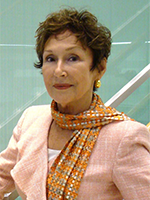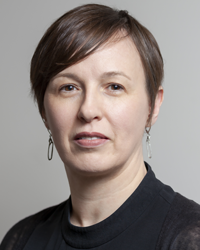As the trend of unretirement grows and physical inactivity remains a pressing issue among adults, a unique opportunity emerges—recruiting older adults to lead physical activity experiences for their peers. These elders bring a wealth of life experience, emotional intelligence, and a deep understanding of the importance of community, making them exceptionally well-suited for these roles. By empowering older adults to become physical activity leaders, we can not only enhance their sense of purpose but also foster a more connected and healthier society.
Avenue for Renewed Purpose
Many retirees face a diminished sense of purpose after leaving the workforce. According to the 2021 Edward Jones/Age Wave Study, 93% of retirees express a strong desire to feel useful in their post-career lives. Additionally, 89% believe there should be more opportunities for retirees to apply their talents and knowledge to benefit their communities and society.
This sense of purpose drives many older adults to re-enter the workforce, often seeking roles that align with their passions and interests, and that offer flexibility. Leading physical activities they enjoy provides an ideal outlet for retirees to use their skills, foster community, and inspire their peers.
Inspiring Others
Hildy Feen, a woman in her 70s from Madison, Wis., transitioned from working in information technology to becoming a low-flying trapeze instructor for older adults. Her journey into circus arts has inspired her peers to try low-flying trapeze.
“When I started teaching people in my age range, many, especially women, would say, ‘I see you perform, and I want to try this, but am I too old? Or, I don’t have the strength.’ I tell them, it’s like any exercise. You do the exercise, and you gain the strength for the exercise,” Feen said. “I started teaching about 10 years ago, a little after I retired. I’ve taught all age ranges, from kids to a woman who, at the time, was 93 years old.”
Flexible Part-Time Work
Teaching physical activity classes offers flexibility, which is particularly appealing to retirees. Deb Kohlwey, who retired from teaching, found a way to continue using her skills and contribute to the community by leading Ballroom Basics for Balance at a local community center.
Feen transitioned from information technology to low-flying trapeze instructing for older adults.
“Career-wise, do I want to work full-time? No, that’s why I’m retired. But I do want something that makes me happy, that fulfills me,” Kohlwey said. “There’s the intellectual part about learning something new, the physical part that I personally need, and the social part. I miss my students, colleagues, and all the connections. Teaching gives me that.”
Venues like YMCAs, community centers and retirement communities often struggle to find individuals willing to work just a few hours a week to lead movement classes. The retiree population is the perfect demographic for these roles. It’s a win-win for everyone involved: the older adults enjoy engaging in physical activities, the organization benefits from a seasoned professional, and the retiree gains a renewed sense of purpose without committing to full-time work.
Creating Experiences for Active Aging
Retirees can turn their passions into meaningful experiences for active aging individuals. Arlo Niederer, a retired geophysicist and avid rock climber, leads the Boomers Climb Club in Colorado Springs. The club provides a supportive community for fellow rock climbers who are older than 50 to practice and improve their skills. Arlo said, “There are three priorities: The first is to have fun, the second is to make friends, and third one is to climb better.”
Similarly, Norm Farrar, after retiring from dentistry, became the president of the popular Pikes Peak Over The Hill Gang. The club serves as a community for adults older than age 50 who enjoy outdoor activities together, such as skiing, golfing, camping, biking, hiking and playing pickleball. The club’s activities are made possible by volunteers who help organize events.
Natural Community Builders
Older adults understand the importance of building community and fostering human connection.
“I have all kinds of relationships, but some people don’t,” Kohlwey said. “That’s an important part of getting exercise. Part of the joy in life is doing it with other people. It doesn’t matter whether you’re good at it or not. You’re just having a good time.”
Feen added, “Not only is it fun, but it’s also a social environment. Several of my students are single, and it gives them a chance to know that every week, they’ll go to this fun class and see other people their age doing the same thing.”
“They make friends their own age who also climb, creating a strong social group where people can have fun together and enjoy an activity they love,” Neider said about his climbing group. The social connections extend beyond the gym, as club members have formed a group of climbers of all ages who spend weekends climbing together.
Communities Benefit, Too
When older adults take on leadership roles in physical activity programs, the entire community reaps the rewards. Their involvement fosters a deeper sense of connection among participants, promotes inclusivity, and enhances the overall well-being of their peers. By drawing on their life experience and interpersonal skills, older adults create environments where others feel supported, motivated, and inspired to stay active. This not only improves the individuals’ health and quality of life, but also strengthens the social fabric of the community.
Erin Eleuterio is a fitness professional, functional aging specialist and creator of Second Act Fit Pros, a podcast and community.
Photo caption: Hildy Feen, left, with two of her students in flying trapeze class.
Photo credit: Courtesy Hildy Feen.









